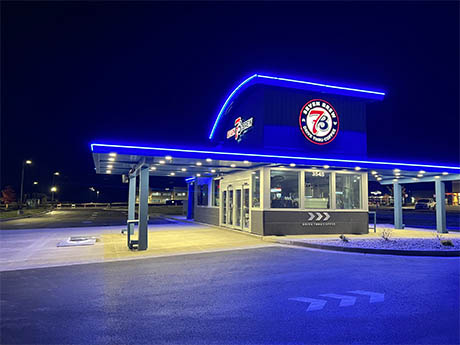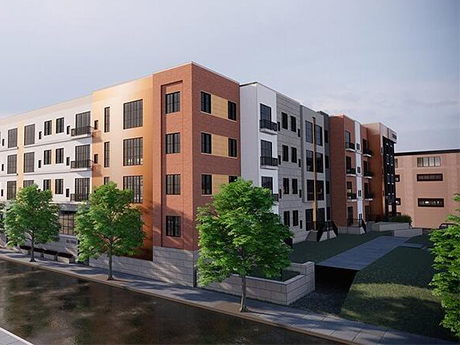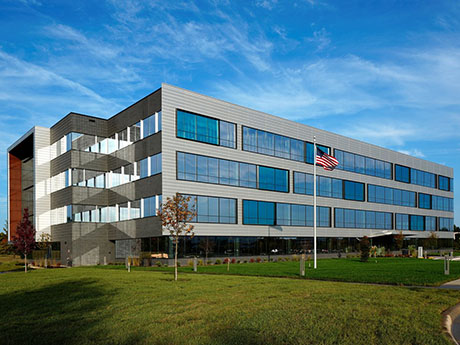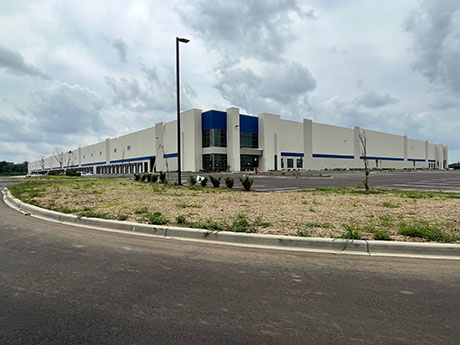As the nation’s 28th-largest city, Louisville is home to a dynamic, diversified economy. The Greater Louisville region draws workers from a 26-county area in Kentucky and southern Indiana, providing an ample and reliable source of educated and skilled employees. The geography of Louisville, specifically its accessibility to the Ohio River, central location nationally and mild climate, have contributed to its ability to grow and evolve. Additionally, reducing the income tax rate in Kentucky is a goal of the current Republican majority State Representatives to further economic development, and the Democratic governor (Gov. Andy Beshear) is also supporting this reduction as a way to help ease the burden of inflation for residents. Legislation passed in 2022 dropped the individual tax rate from 5 percent to 4.5 percent for tax year 2023, and a bill signed earlier this year by Gov. Beshear drops it again for 2024 to 4 percent. The goal is to ultimately get income tax rates down to zero, or very close to zero, in 50-basis-point steps as certain budget metrics are hit. These measures seem to be working for growth in the Commonwealth. One of the more notable capital investment projects is the Ford partnership BlueOval SK Battery …
Market Reports
Following the trends of both regional and national multifamily statistics, the Louisville metro area has had a robust stretch of development, repositioning and innovation in the multifamily housing sector that has surpassed 10 years in duration. With a population of 1.32 million, there are 516,000 households in Louisville with an average household income of $69,000. Pursuant to a recent CoStar Group report, Louisville has a total inventory of just over 84,000 units. It is anticipated that there will be over 91,000 units by 2026, a 8.3 percent increase. CoStar also forecasts that the Derby City’s vacancy rate will hover around 5.5 percent in 2026. One of the projects under development includes The Reserve (the Stable) at English Station. The 172-unit, Class A community adjoins a patio home development that was developed by Sunshine Industries. The property is slated for completion in January 2023. As far as popular neighborhoods for development, there are several recently developed or under construction projects in the city’s East End district. The city’s economy has benefited from the accelerated adoption of e-commerce as a result of the pandemic. Retailers and logistics providers are leasing a record amount of space as they seek to expand their distribution …
Remote Work Prompts Flight to Quality, High Urban Vacancies for Louisville Office Market
by John Nelson
The Louisville office market is taking diverse paths forward following the pandemic. The suburban Class A market is thriving with new construction, rental rate growth and resiliency in the face of downsizing tenants and negative absorption. A flight to quality among tenants has benefited local developers such as NTS Development, which has been constructing first-class, next-generation buildings at ShelbyHurst Office Campus since 2012. NTS recently completed its fifth speculative office building at the project, 425 North Whittington, a four-story, 130,000-square-foot building that is 60 percent leased with strong leasing activity. The flight to quality is driving tenants to choose higher-quality buildings with more expensive rental rates to help attract and retain talent and cater to a hybrid workforce. Traditional downtown occupiers are also considering the suburbs for the first time to create a workplace that draws employees back to the office. Suburban vacancy rates have increased since the end of 2019, with the Class A rate increasing by 490 basis points to 13.5 percent and the Class B vacancy rate increasing by 440 basis points to 15.2 percent as of second-quarter 2022. The average asking rental rate for Class A suburban space rose during this period despite increased vacancy rates. …
With vacancy in Louisville’s industrial bulk market sitting at 1.7 percent, an increase of supply is sorely needed. Fortunately, plenty is on the way. At the halfway point of 2022, over 9.5 million square feet of bulk inventory is under construction, with approximately 4.8 million square feet slated for completion by year-end. Due to the demand for big box distribution warehouse space, which skyrocketed due to COVID-19 and the increase of online ordering and e-commerce fulfillment, absorption (12.9 million square feet) outpaced construction (9.9 million square feet) to the tune of 3 million square feet, and depleted vacancies in the process. Average asking rent increased from $4.79 per square foot to $5.26 in the second quarter and is up 26.7 percent from $4.15 at this time last year. This can mainly be attributed to overall increase in demand and increased construction costs. With nearly 5 million square feet of new speculative product hitting the market by year-end, coupled with recent completions of approximately 3 million square feet and 1.6 million square feet of sublease space expected to hit the market in the near future, deal rates are expected to steady and could potentially decrease as competition among landlords increases over …
Louisville’s office market is certainly a representative example of a typical office market in a mid-sized city. As expected, Louisville experienced the impact of COVID-19 and the remote work trend. Downtown had to endure the social unrest during summer 2020 that created a perception of a lack of safety. Our community has work to do to get things back to “normal,” but things are slowly starting to move in the right direction. As has always been the case, the downtown and suburban markets face different trends. Typically, the suburban market has outperformed the central business district (CBD) with higher average rents and lower vacancy. Presently, the downtown Class A market has average rents in the $19.11 per square foot range and vacancy around 22 percent. The suburbs are seeing $22.16 per square foot in rent and 14.6 percent vacancy. Recently, the CBD posted 480 square feet of negative net absorption for the second quarter. After taking large hits throughout most of the pandemic, this looks to be a sign that downtown may finally be turning the corner. The suburban market took a big hit this past quarter due to vacancies and downsizing of two large companies. Even so, suburban markets …
Louisville’s multifamily market has long benefited from the city’s highly diversified employment base. With strongholds in distribution (boosted by the recent surge of e-commerce sales), manufacturing, healthcare and professional services, Louisville has rebounded from the pandemic-induced recession more quickly than much of the rest of the country. As of July 2021, the local unemployment rate was 4.5 percent, while the national rate was 5.4 percent. In addition to increased job growth, local employers are raising wages to attract top talent needed for expansion requirements. This wage growth, coupled with employment demand, has created a considerable advantage for multifamily property owners that have been able to push rental rates on an annual basis. Integra Realty Resources (IRR) reports that overall market vacancy is hovering at a low 4 percent. The combination of low vacancy rates and wage growth has allowed multifamily owners to increase rent structures. Landlords have seen high single-digit annual rent increases for the last four years in the Louisville MSA. Class A properties have been achieving rents approaching $2 per square foot for some unit types in luxury developments. IRR also reports that there are currently over 4,000 multifamily units planned or under construction in the Louisville MSA. …
Louisville is best known for the Kentucky Derby, the premier thoroughbred horse race that has occurred every year in the city since 1875. However, there is another continuous streak that is happening in Louisville, and that is 21 straight quarters of positive net absorption for industrial real estate as of second-quarter 2020. Louisville’s central location within the Southeast and Midwest, which gives area users the ability to reach two-thirds of the U.S. population within a one-day drive, is a major driver for industrial real estate. The UPS Worldport Hub in Louisville is its only “all-points” hub in the UPS network and provides warehouse and distribution businesses with the ability to process orders later and receive earlier deliveries. This is a tremendous benefit for e-commerce, pharmaceutical, laboratory and electronics companies, among many other industries. There is continual interest from West Coast companies seeking a central location to fulfill product as customer demand for shorter delivery times increases as part of the overall customer experience. UPS Supply Chain Solutions, the third-party, full-service fulfillment subsidiary of UPS, has a significant presence in Louisville. Many of the customers for which UPS Supply Chain provides fulfillment services are pharmaceutical-related businesses that require time-critical deliveries and …
Much like the rest of the nation, both Louisville-area landlords and tenants are stalling while waiting for the ripple effects of the COVID-19 pandemic to become clear. The office market in Louisville has entered a holding pattern of sorts, while tenants evaluate their workspace needs in light of the major shift to remote work. Many are opting to wait and see what the market holds, a stark contrast to the steady development and leasing activity we saw in 2019. Now with investors taking a more long-term view of the market, larger portfolio sales are limited while everyone questions the future demand for office space. The most recent portfolio transfer was made by the New York-based Group RMC Corp. in its acquisition of a six-building, Class B office portfolio from locally based Ascent Properties for $44.5 million. The deal was traded at an 8.6 percent cap rate. However, don’t let the lull in activity fool you. The region’s office market is ripe with possibilities. While many local companies initially speculated about permanently adopting full-term remote work in the second quarter, they’re reconsidering as time goes on. Regional JLL research shows that 80 percent of businesses said most employees will eventually return …
Home of the Louisville Slugger and Muhammad Ali, sports is engrained in the identity of Louisville. Derby City continues to make a big push to bring in an NBA team, but a different professional team is already in town. Louisville City FC, also known as LouCity, is Louisville’s professional soccer team. The club is not only a two-time champion of the USL, the team is now in the process of building a new $65 million stadium with seating for more than 13,000 spectators. Dubbed Lynn Family Stadium, the new arena will be the centerpiece of a 40-acre, $200 million mixed-use development in Louisville’s Butchertown neighborhood. Construction of the stadium is on schedule and should open for the 2020 season. The stadium will have amazing views, including the skyline of downtown Louisville and the waterfront area overlooking the Ohio River. The project should spur other retail, housing and offices to be constructed to revitalize Butchertown. Additional sports/entertainment is moving into Louisville’s malls as anchors. The vacant Sears location at Oxmoor Mall in the St. Matthews area will have Topgolf as a new anchor tenant. Topgolf has been working to come to Louisville for 18 months and was recently granted the approvals …
Louisville continues high occupancy levels throughout the metropolitan area in all apartment types as the market continues to enjoy record-level rent growth and new development. This is enhanced by low unemployment and rising wages throughout the Louisville metropolitan area. The diverse local economy from worldwide distribution at UPS and high-tech manufacturing at Ford Motor Co. and General Electric Appliance Park, as well as innovation in the medical industry, continue to provide high-paying jobs and a highly desirable employment base that can drive occupancy and rents for apartment owners in the Louisville metropolitan area. Integra Realty Resources reports an overall occupancy level of 96 percent for the Louisville metropolitan area, which has seen mid- to high-single-digit rent growth on an annual basis over the last three years. This high occupancy level and rental growth rate have attracted a number of new developments around the metropolitan marketplace. In 2018, there were 2,173 units completed and an additional 898 have been delivered in 2019 as of this writing. Most of the larger scale developments have been completed by regional developers such as Nashville-based Bristol Development and Indianapolis-based Cityscape Residential. Local development companies, such as Denton Floyd, LDG Development, Hagan Development and NTS Development, …






